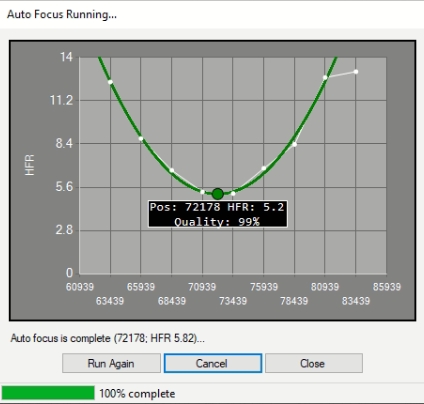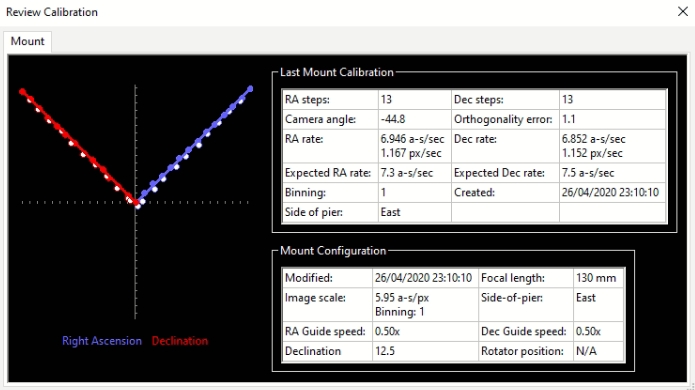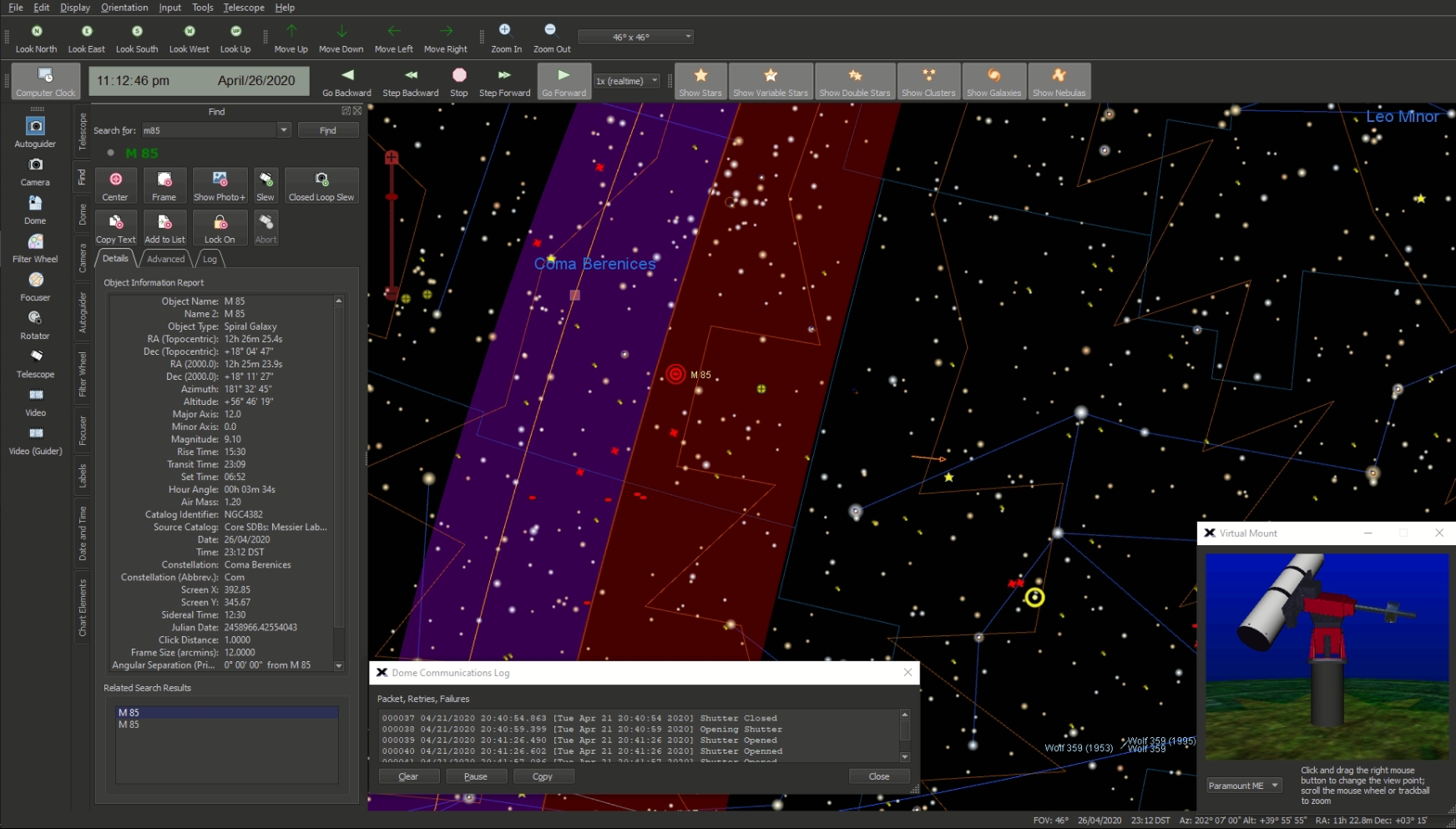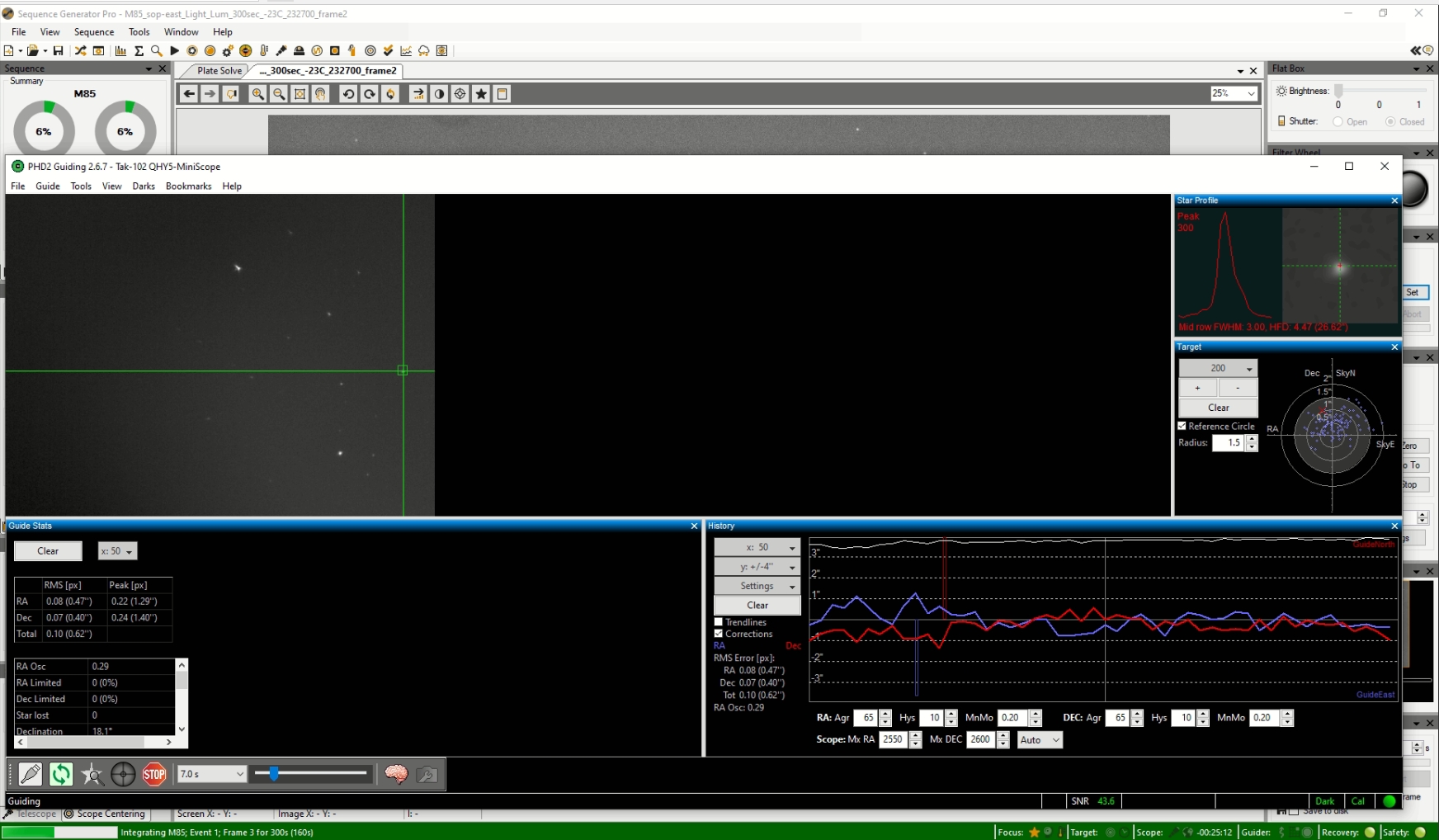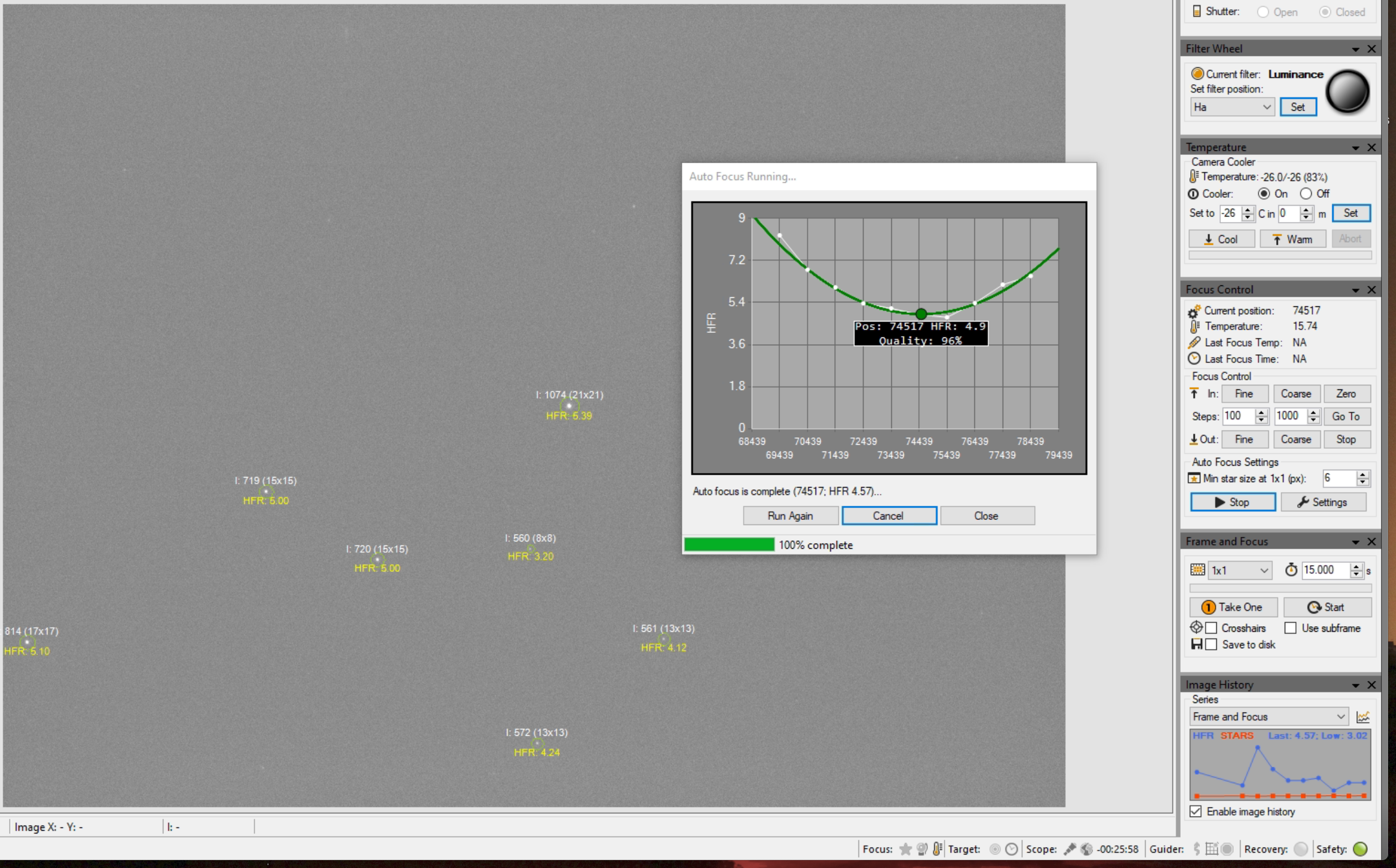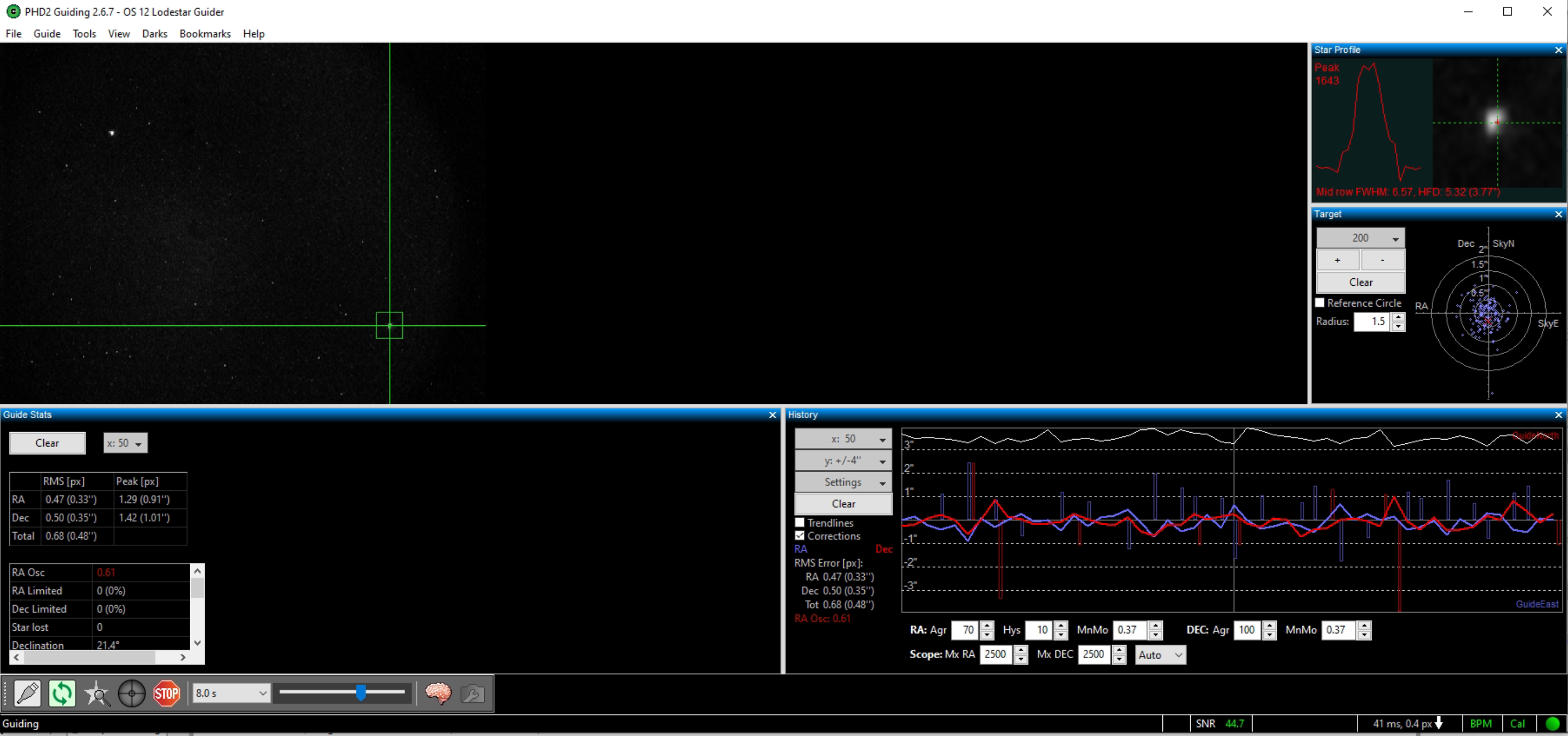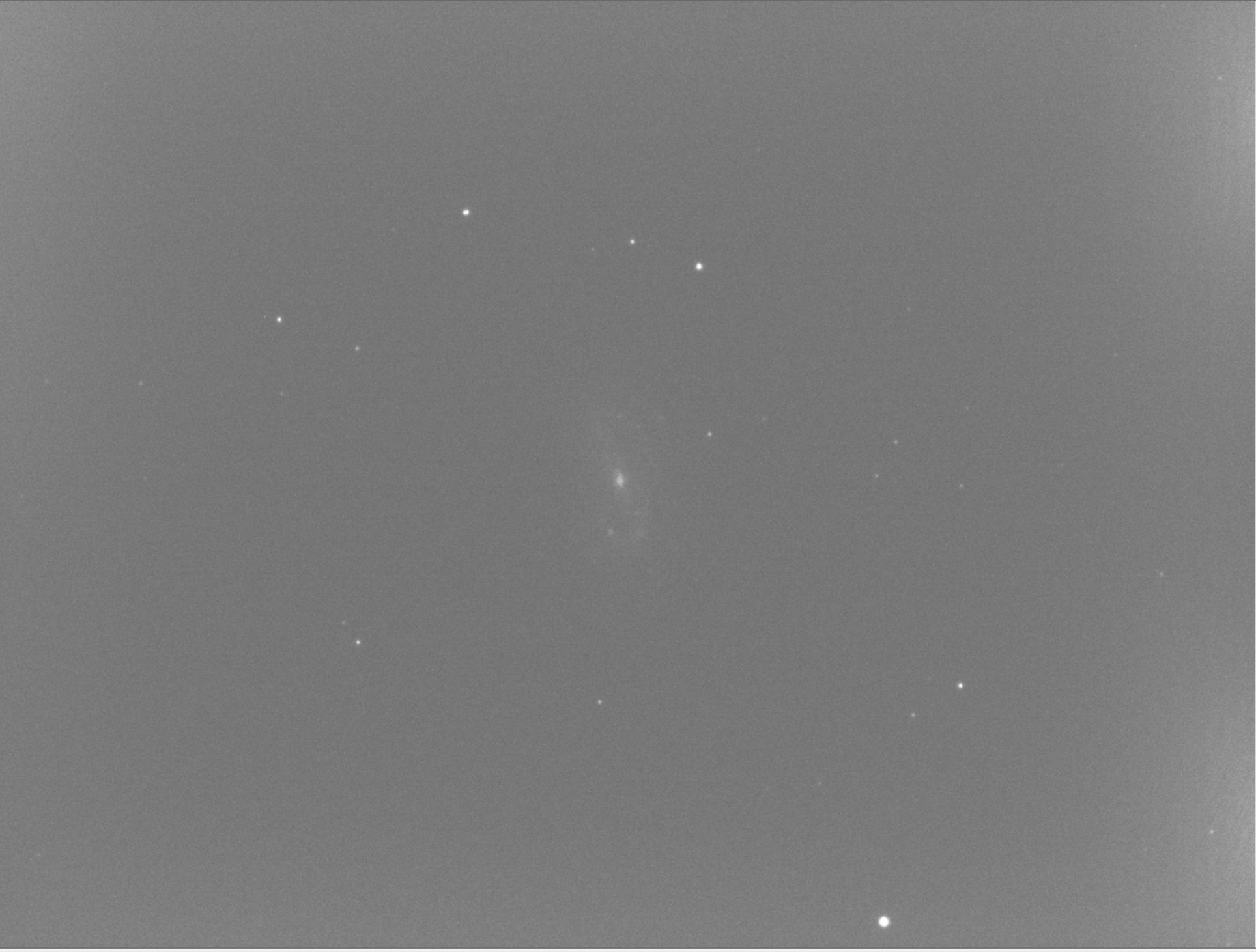21:24 – 03:00
So for the first time in a while the observatory is back up and running and it’s Friday and it’s clear! So Bob came over and we set about imaging an exoplanet and getting the 22″ Obsession dob out of the warmroom where it had been sitting since November, and moving it down to the observing plateau by the IMT3b observatory.
A few nights back, during the week I had managed to get the 12″ in the dome balanced with my original 2004, 5″ Skywatcher 130 reflector as a guide scope and the Skywatcher Esprit 120 ED on the other side. The 5″ now guides, however the QHY camera on the 120 is not currently connecting so I need to investigate. Also the MEII hand controller is sending erroneous signals to the mount so I needed to disconnect as it kept saying ‘joysticking’ and moving the mount. Unfortunately the 5″ was pointing at the dowel so I used off-axis guiding instead.
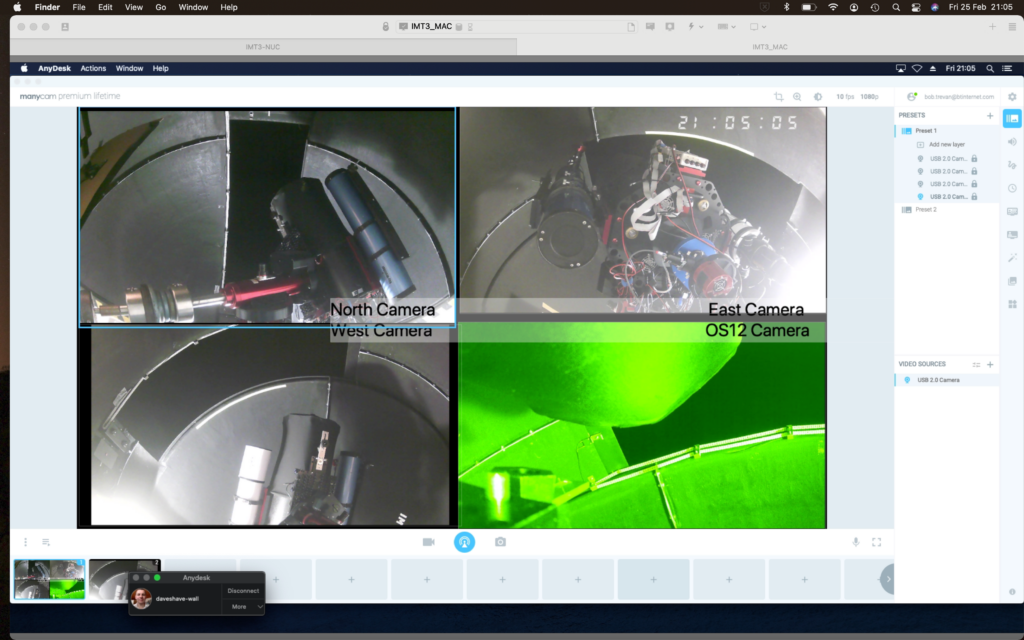
I selected an exoplanet on the Exoclock website, and set about imaging. Unfortunately due to my profile on exoclock being set to UTC +1 and me not noticing I started 45 mins into the transit! I will now use this as a test run and process the data and submit.

So first up was moving the 22″ down to the plateau so it could cool down. I had planned on taking it back up to the Warmroom, however it is so heavy I have decided to keep it in the workshop. I will make sure I connect the electric up for the workshop this weekend thus allowing for the new dehumidifier to be switched on and operational.

Whilst the 22″ cooled down, we went back indoors and setup the 12″ in the observatory to image the transit. The focus point was 25,000 and I made sure I selected the Red filter. I slewed and aligned on the exoplanets host star and then settled on a 5min exposure due to the low brightness. I started imaging at 9:24pm, the transit start was 8:45pm 🙁

Whilst imaging continued we went outside and set about setting up the 22″. Things I learnt from this first public outing were;
- Remember to put the shroud on
- Remember to pub the secondary shield on
- Remember to collimate the secondary first
- Remember to fit the Telrad dew heater
- Remember to find a 40mm eyepiece
- Remember to download and print the Parracor chart
- Remember to set the Parracor to the correct setting
- Remember to buy a 12v battery powered hair dryer
- Remember to buy a secondary dew heater
We collimated the scope and then went on to look at M42 which with the 24mm Panoptic looked great. We then slewed to M45 the Pleiades but of course the open cluster is too wide for the for I was using. Then we tried find M81 and M82 but I found this difficult due to the lack of bright stars in the area. So instead we went to the Trio in Leo.
M65 and M66 looked fairly bright and you could make out the dark dust lane in M65. NGC 3628 was visible with direct vision, however with adverted vision it was much easier. It appeared very long and thin.
We had to use s hairdryer on the secondary a lot. The Telrad also dewed up as did the eyepiece. The primary mirror was fine, although with direct headtorch light looked like it was dewed, but upon inspection this was not the case.
At midnight it was time to pack up before I had to do a meridian flip. Bob helped my dismantle the 22″ dob and then place inside the workshop. I could not move it into the room without dismantling which was a shame. It is far too tall.
Once done, Bob headed off home for a well deserved rest and to warm up due to it being 0℃. I headed indoors and performed the meridian flip at 0:23am.
I then left the observatory running until 2:30am whilst I wrote this blog, had a glass of wine and ate an easter egg 🙂 I also went back out to the workshop to tidy up the telescope eyepieces etc that I had not put away.
At 3pm I went on to take luminance for M85 that I needed to complement the RGB data I had processed. I let this running and went to bed.
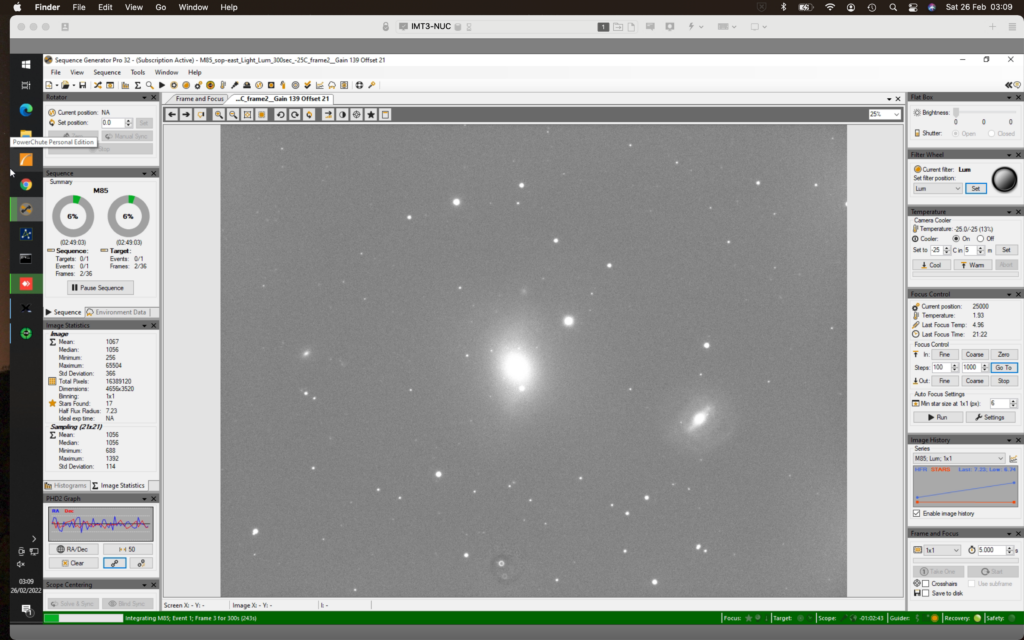
I took flats and dark flats in the morning, although I had to increase the exposure to get the required level for the flats. This is strange as they should be the same. I am now concerned the camera my be playing up and causing an issue. I will investigate.

